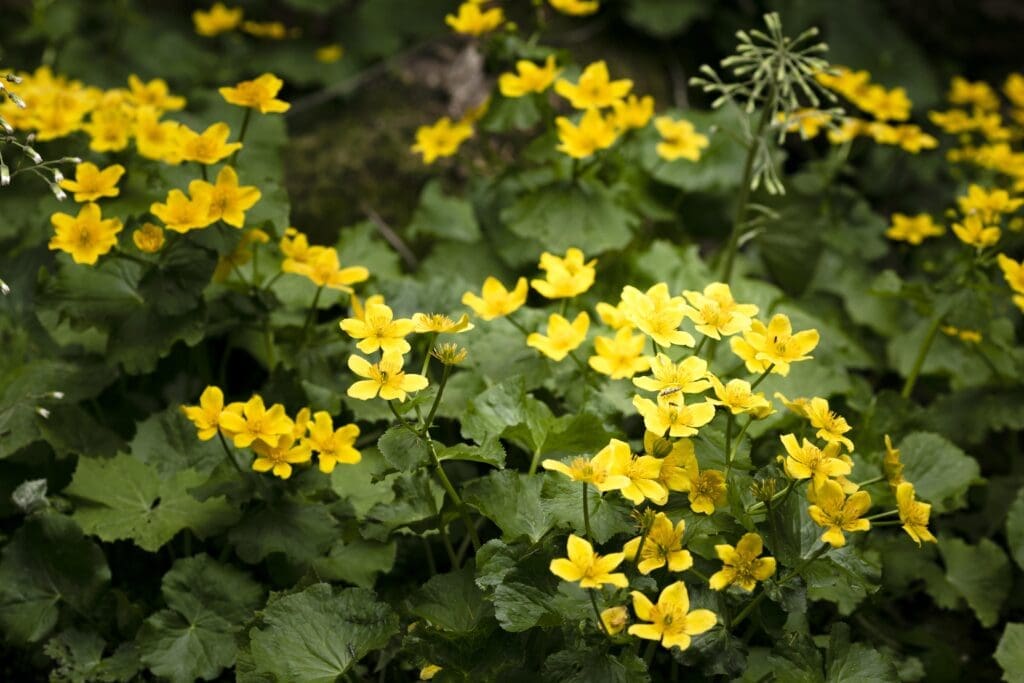
Chelidonium majus
Latin name: Chelidonium majus
Short name: Chel
Common name: Greater Celandine | Swallow-wort | Tetterwort | Garden Celandine | Felonwort
Primary miasm: Sycotic Secondary miasm(s): Syphilitic, Psoric
Kingdom: Plants
Family: Dicotyledon | Papaveraceae (Poppy family)
- Symptomatology
- Remedy Information
- Differentiation & Application
Chelidonium majus is a tall perennial herb from the Papaveraceae family, with bright yellow flowers and a distinctive orange sap. The sap is acrid and caustic, traditionally used to treat warts and eye ailments. It contains various alkaloids (e.g., chelidonine, sanguinarine), which act primarily on the liver, bile ducts, and digestive tract. Homeopathically, Chelidonium is famed for its action on the liver and right-sided ailments, often associated with a characteristic pain under the inferior angle of the right scapula.
Traditionally used in herbal medicine for liver disorders, gallstones, jaundice, digestive weakness, and externally for warts and eye inflammation. The sap was applied to corneal opacities and skin eruptions in folk medicine.
First proven by Hahnemann and later expanded by Hering, Hughes, Allen, and others. Toxicological and clinical observations also contributed significantly.
- Liver and gall bladder – bile ducts, hepatic parenchyma
- Right scapular region
- Stomach and intestines
- Lungs – right lung, lower lobes
- Eyes – sclerotic congestion
- Skin – jaundice, warts, eruptions
- Mucous membranes
- Right side in general
- Eating (especially warm food)
- Hot drinks, particularly warm milk
- Pressure on abdomen
- Lying on left side
- Vomiting (especially bile)
- Bending forward
- Passing flatus or stool
- Motion
- Touch or pressure on right hypochondrium
- Drafts of air
- Change of weather, especially cold and damp
- Early morning
- Lying on the painful (right) side
- Mental exertion
- During stool (sometimes)
- Lycopodium – Right-sided liver remedy with flatulence and afternoon aggravation; more psychological insecurity
- Bryonia – Pain worse from motion, dry mucous membranes, irritability; lacks hepatic focus
- Carduus marianus – Similar liver and gall bladder affinity, but less scapular pain
- Podophyllum – Diarrhoea and liver symptoms, more abdominal than scapular involvement
- Nux vomica – Digestive and hepatic issues with marked irritability; more suited to high-stress individuals
- Complementary: Lycopodium, Nux vomica
- Antidotes: Chamomilla, Mercurius
- Follows well: Aconite, Bryonia
Chelidonium represents the archetype of congested, sluggish, right-sided liver pathology. Its keynote is the pain under the right scapula, but its essence lies in the whole system’s torpor—mental dullness, digestive heaviness, and physical stagnation. It mirrors individuals who are overworked, irritable, and driven, yet overwhelmed by internal toxicity—physically through bile stasis, and emotionally through suppressed rage or exhaustion.
Chelidonium represents the archetype of congested, sluggish, right-sided liver pathology. Its keynote is the pain under the right scapula, but its essence lies in the whole system’s torpor—mental dullness, digestive heaviness, and physical stagnation. It mirrors individuals who are overworked, irritable, and driven, yet overwhelmed by internal toxicity—physically through bile stasis, and emotionally through suppressed rage or exhaustion.
Mind
- Confusion, mental
- Dullness, sluggish thinking
- Ailments from anger
- Irritability in morning
Abdomen
- Pain, liver region
- Pain, right hypochondrium, extending to scapula
- Gallstone colic
- Flatulence, hepatic
Back
- Pain, right scapula
- Pain, liver extending to back
- Stiffness, scapular region
Stomach
- Vomiting, bile
- Craves warm milk
- Bitter taste in mouth
Skin
- Jaundice
- Liver spots
- Warts, hands
Generalities
- Right-sided complaints
- Better from hot drinks
- Worse in morning
- Better from pressure on abdomen
- Samuel Hahnemann – Materia Medica Pura: Original proving data
- C. Hering – Guiding Symptoms: Confirmed scapular pain, liver symptoms, and gastric profile
- J.T. Kent – Lectures on Homoeopathic Materia Medica: Core mental and hepatic states
- William Boericke – Pocket Manual: Emphasis on right scapula, warm milk amelioration
- John Henry Clarke – Dictionary of Practical Materia Medica: Complete profile of digestive and liver action, modality confirmation
- Allen’s Encyclopaedia: Verified symptom location and organ affinities
